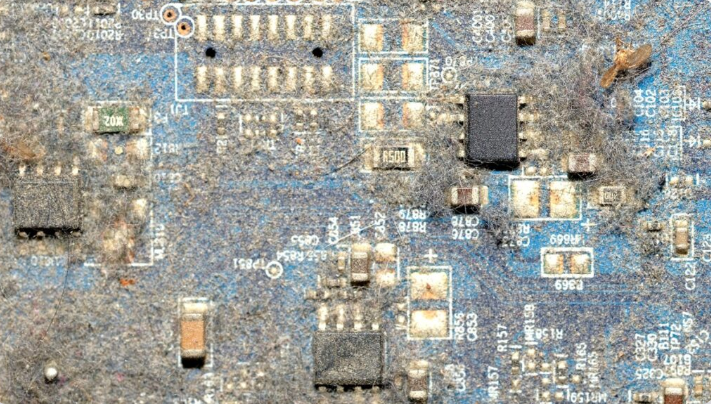Industrial PCB Assembly: Best Practices for Durable Electronics
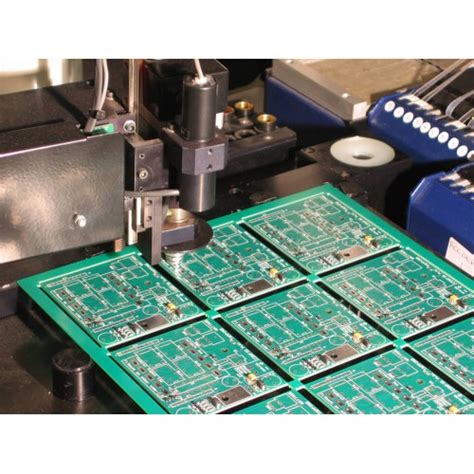
Key Takeaways
Effective PCB assembly for industrial applications demands meticulous attention to durability, performance, and environmental resilience. Selecting appropriate materials—such as high-temperature laminates or moisture-resistant substrates—is foundational to ensuring long-term reliability in harsh conditions. Integrating rugged components, like conformal-coated ICs or vibration-resistant connectors, further enhances the robustness of PCBA systems. Rigorous testing protocols, including thermal cycling and shock testing, validate performance under extreme operational stresses.
Optimizing layout design to minimize signal interference and thermal hotspots is equally critical, particularly for high-power industrial electronics. Environmental factors, such as exposure to chemicals or fluctuating humidity levels, must inform both component placement and enclosure design. Advanced soldering techniques, including selective soldering for mixed-technology boards, contribute to the structural integrity of PCB assemblies.
For deeper insights into evolving methodologies, explore emerging trends in PCB manufacturing. By aligning material science, design optimization, and quality control, manufacturers can deliver PCBA solutions that meet the stringent demands of industrial environments.
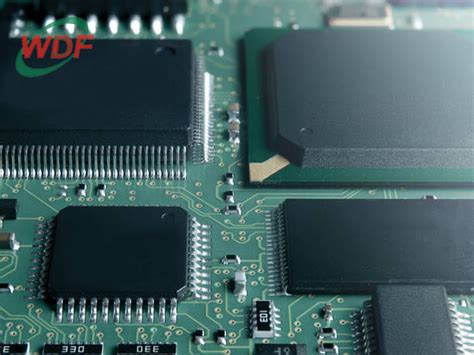
Industrial PCB Assembly Material Selection Guide
Selecting appropriate materials is foundational to creating durable PCB assemblies for industrial applications. The operational demands of harsh environments—including extreme temperatures, vibrations, and chemical exposure—require substrates, laminates, and coatings that prioritize thermal stability, mechanical resilience, and environmental resistance. For instance, FR-4 epoxy laminates remain a popular choice for their balance of cost and performance, while polyimide-based substrates excel in high-temperature settings.
Tip: When designing for industrial PCBA, always verify material certifications (e.g., UL 94V-0 for flammability) to ensure compliance with industry standards.
Copper weight and finish also play critical roles. Heavy copper traces (2 oz/ft² or higher) enhance current-carrying capacity and durability, particularly in power-intensive systems. For surface finishes, ENIG (Electroless Nickel Immersion Gold) offers superior corrosion resistance compared to HASL, making it ideal for humid or corrosive environments. Additionally, conformal coatings like silicone or acrylic provide an extra layer of protection against moisture and contaminants.
"Material compatibility is non-negotiable. A substrate that performs well in thermal cycling might fail under mechanical stress unless paired with complementary coatings." – Spectra Physics PCB Manufacturing Guide
Finally, consider thermal management materials such as aluminum-backed laminates or ceramic-filled prepregs to dissipate heat effectively. By aligning material properties with application-specific stressors, manufacturers can optimize the longevity and reliability of industrial PCB assemblies.
Rugged Component Integration Techniques
In industrial PCB assembly, integrating rugged components requires strategic engineering to withstand extreme conditions. Critical steps include selecting high-vibration-resistant connectors, encapsulating sensitive circuits, and implementing advanced thermal management systems. For PCBA destined for harsh environments, components like mil-spec capacitors and shock-absorbent mounting hardware are prioritized to minimize mechanical stress and electrical failure.
| Component Type | Integration Technique | Environmental Benefit |
|---|---|---|
| High-Vibration Connectors | Threaded fasteners + epoxy underfill | Resists mechanical loosening |
| Thermal Interface Materials | Silicone-based pads + heatsinks | Dissipates heat in high-temperature zones |
| Conformal Coatings | Automated spray application | Protects against moisture/chemicals |
| EMI/RFI Shields | Laser-welded enclosures | Blocks electromagnetic interference |
Transitioning from material selection to physical integration, designers must balance mechanical robustness with signal integrity. Techniques like press-fit pin installation reduce solder joint fatigue, while potting compounds stabilize components exposed to cyclic temperature shifts. For PCBA reliability, manufacturers often combine these methods with pre-assembly simulations to identify stress points. Rigorous post-integration testing, including thermal cycling and vibration analysis, ensures components maintain performance thresholds in operational extremes.

Testing Protocols for Harsh Environment PCBs
Ensuring the reliability of PCB assembly in harsh environments demands systematic validation through rigorous testing protocols. Thermal cycling tests simulate extreme temperature fluctuations, verifying the resilience of solder joints and substrate materials. For instance, thermal shock testing exposes boards to rapid shifts between -40°C and 125°C, mimicking conditions like industrial freezers or desert machinery. Vibration and mechanical shock testing further validate structural integrity, particularly for PCBA deployed in heavy machinery or transportation systems.
Humidity resistance is equally critical, with tests such as 85°C/85% RH (relative humidity) exposure ensuring components withstand prolonged moisture ingress. Designers often reference standards like IPC-6012DA for aerospace or MIL-STD-810G for military applications, which define thresholds for humidity tolerance during PCB assembly. Advanced techniques like conformal coating analysis and ionic contamination testing add layers of protection against corrosive agents.
To align with industrial demands, functional testing under operational loads—such as high-voltage stress or electromagnetic interference (EMI) scans—confirms performance stability. These protocols not only identify latent defects but also inform iterative improvements in material selection and layout design, creating a feedback loop that elevates durable electronics manufacturing. By integrating such methodologies, manufacturers ensure PCBA reliability while maintaining compliance with industry-specific certifications.
Durable Electronics Manufacturing Best Practices
Achieving longevity in industrial electronics demands meticulous attention to PCB assembly processes and systemic design strategies. A robust approach begins with thermal management—ensuring adequate heat dissipation through copper weight optimization and strategic placement of thermal vias. This prevents component degradation in high-temperature environments, a common challenge in industrial settings. Equally critical is mechanical stress mitigation, where techniques such as edge plating and reinforced solder joints enhance structural integrity during vibration or shock exposure.
In PCBA workflows, selecting components rated for extended temperature ranges (-40°C to 125°C) and moisture-resistant coatings ensures compatibility with harsh operational conditions. Automated optical inspection (AOI) systems should validate solder joint quality, while conformal coating applications guard against contaminants like dust or chemicals. For mission-critical systems, redundancy in power traces and signal paths adds an extra layer of reliability.
Transitioning to post-assembly verification, accelerated life testing (ALT) simulates years of operation within weeks, identifying potential failure points before deployment. By integrating these practices, manufacturers balance durability with performance, aligning with the broader goals of industrial PCB assembly resilience.

Optimizing PCB Layouts for Industrial Use
Effective PCB assembly for industrial applications demands meticulous attention to layout design to ensure durability and performance. A well-optimized layout minimizes electromagnetic interference (EMI), enhances thermal management, and improves signal integrity—critical factors in harsh environments. Start by prioritizing component placement: position high-power devices away from sensitive analog circuits to reduce noise coupling. Use wider traces for power lines to handle current loads and mitigate voltage drops, while maintaining adequate spacing between traces to prevent arcing in high-humidity conditions.
Incorporating PCBA-specific design rules, such as annular ring reinforcement for through-hole components, strengthens mechanical stability during vibration or shock. Thermal relief pads should be integrated to manage heat dissipation, particularly for industrial systems operating at elevated temperatures. Designers must also consider material compatibility—selecting substrates with high glass transition temperatures (Tg) ensures structural integrity under thermal stress.
For advanced applications, emerging trends in PCB technology highlight the growing role of embedded components and multi-layer stacking to save space while maintaining robustness. Transitioning between layout layers should use staggered vias to reduce stress points. Finally, collaborate with PCB assembly partners early in the design phase to align fabrication capabilities with ruggedization requirements, ensuring seamless integration of conformal coatings or encapsulation methods post-assembly.
Environmental Factors in Industrial PCB Design
When designing PCB assemblies for industrial applications, engineers must account for extreme environmental conditions that threaten long-term reliability. Harsh operational settings—such as fluctuating temperatures, moisture exposure, chemical contaminants, and mechanical vibrations—demand specialized design strategies to ensure PCBA durability. Thermal management becomes critical in environments with high heat generation or subzero temperatures; using materials like high-Tg (glass transition temperature) laminates and copper-core substrates helps mitigate thermal stress. For moisture-prone settings, conformal coatings or potting compounds provide robust protection against humidity and condensation, preventing corrosion and dendrite growth.
In dusty or corrosive atmospheres, PCB assembly designs benefit from sealed enclosures rated for IP67 or higher, coupled with corrosion-resistant surface finishes like ENIG (Electroless Nickel Immersion Gold). Additionally, mechanical stability is enhanced through strategic component placement, avoiding stress points, and using ruggedized connectors. Vibration testing during prototyping validates layout choices, ensuring solder joints and components withstand repetitive shocks. By integrating these environmental considerations early in the PCBA design phase, manufacturers achieve fail-safe operation even in the most demanding industrial ecosystems.
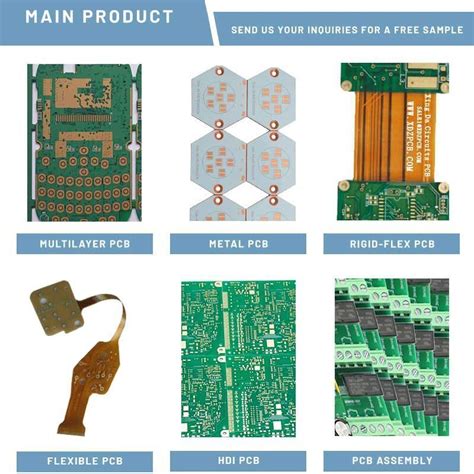
Soldering Methods for Long-Lasting PCB Assemblies
Achieving durability in industrial PCB assembly hinges on selecting soldering techniques that ensure robust electrical and mechanical connections. Reflow soldering remains a cornerstone method for surface-mount devices (SMDs), offering precise temperature control to minimize thermal stress on sensitive components. For through-hole parts, wave soldering provides efficient bulk processing, though modern PCBA workflows often integrate selective soldering systems to target specific areas, reducing exposure to heat and flux residues.
In harsh environments, PCB assembly reliability depends on solder alloy choices. High-reliability applications increasingly use SAC305 (Sn96.5/Ag3.0/Cu0.5) for its balance of mechanical strength and resistance to thermal cycling. Additionally, conformal coatings applied post-soldering act as barriers against moisture, dust, and chemical exposure. Automated optical inspection (AOI) systems further validate joint integrity, flagging voids or cracks that could compromise longevity.
To mitigate vibration-induced failures, PCBA designs often incorporate underfill epoxy for critical components like BGAs, reinforcing solder joints against mechanical shocks. Combining these methods with controlled atmosphere soldering (e.g., nitrogen-environments) minimizes oxidation, ensuring consistent joint quality. By aligning soldering practices with operational demands, manufacturers enhance the resilience of industrial electronics in extreme conditions.
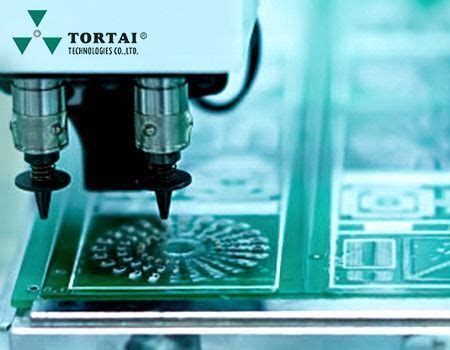
Quality Control in Rugged Electronics Production
Robust PCB assembly processes for industrial applications demand meticulous quality control (QC) frameworks to ensure longevity in harsh environments. Critical inspection stages begin with automated optical inspection (AOI) systems, which detect soldering defects, misaligned components, or micro-cracks in PCBA substrates. For mission-critical systems, X-ray imaging complements AOI by verifying internal layer integrity and hidden solder joints in high-density interconnects.
Environmental stress screening (ESS) remains a cornerstone of QC, exposing assemblies to extreme thermal cycling, vibration profiles, and humidity levels that mimic real-world operating conditions. Statistical process control (SPC) tools track deviations in parameters like solder paste viscosity or reflow oven temperatures, enabling real-time adjustments during PCB assembly.
To maintain consistency, manufacturers adhere to IPC-A-610 standards for acceptability criteria, with additional certifications (e.g., ISO 9001) governing documentation and traceability. Advanced PCBA validation often incorporates boundary-scan testing to isolate faults in complex circuitry, while failure mode and effects analysis (FMEA) preemptively addresses reliability risks. By integrating these layered protocols, producers achieve the zero-defect thresholds required for industrial electronics deployed in energy, defense, or heavy machinery sectors.
Conclusion
In the realm of industrial PCB assembly, achieving durability hinges on meticulous attention to design, material, and testing standards. By prioritizing rugged component integration and robust PCBA manufacturing processes, engineers can ensure electronics withstand extreme temperatures, vibrations, and contaminants. Critical steps include selecting high-Tg substrates and conformal coatings, as well as optimizing layouts to minimize thermal stress—practices that directly enhance PCB assembly longevity.
Rigorous testing protocols, such as thermal cycling and HALT (Highly Accelerated Life Testing), remain indispensable for validating performance in harsh environments. Additionally, leveraging advanced soldering techniques—like selective soldering for dense boards—ensures reliable connections. For further insights on design optimization, explore our guide on PCB panelization strategies, which highlights efficient manufacturing workflows.
Ultimately, success in industrial PCBA relies on harmonizing material science, precision engineering, and quality assurance. By embedding these principles into every phase—from prototyping to final inspection—manufacturers can deliver electronics that meet the exacting demands of industrial applications while maintaining cost efficiency and scalability.
FAQs
What defines a reliable PCB assembly for industrial use?
A reliable industrial PCB assembly prioritizes material durability, ruggedized components, and adherence to IPC Class 3 standards to withstand extreme temperatures, moisture, and vibration. Critical factors include using high-Tg laminates, conformal coatings, and solder alloys rated for thermal cycling.
How does PCBA design differ for harsh environments?
Designing PCBAs for harsh conditions requires optimizing layouts for thermal management and mechanical stability. This includes minimizing trace lengths near heat sources, adding strain relief for connectors, and selecting components with industrial-grade MTBF (Mean Time Between Failures) ratings.
What testing protocols ensure longevity in industrial electronics?
Rigorous environmental testing—such as thermal shock cycling, vibration analysis, and salt spray testing—validates performance. Functional testing under load conditions and accelerated life testing (ALT) simulate years of operation in compressed timeframes.
Why is solder joint integrity critical in PCB assembly?
Industrial PCB assemblies face constant stress from thermal expansion and mechanical shocks. Techniques like void-free soldering, using SAC305 alloys, and automated optical inspection (AOI) ensure joints withstand 10,000+ thermal cycles without failure.
What are common mistakes in rugged PCBA manufacturing?
Overlooking conformal coating uniformity, using commercial-grade components in industrial applications, and skipping vibration resistance validation often lead to premature failures. Always specify industrial-rated parts and test to MIL-STD-810 standards.
Need Custom Industrial PCB Assembly Solutions?
For expert guidance on durable PCB assembly tailored to harsh environments, please click here to explore our certified manufacturing capabilities.



